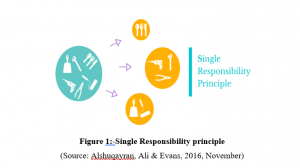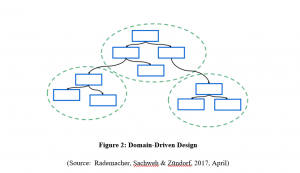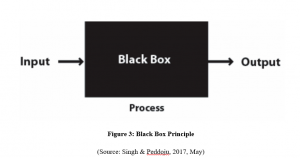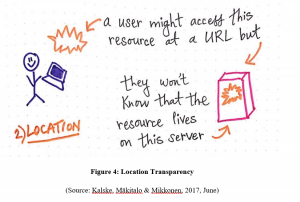MIS603 Microservices Architecture Assignment Sample
Here’s the best sample on MIS603 Microservices Architecture Assignment, written by expert.
Introduction
A fundamental concept underlying microservice architecture is whenever things become divided into small, configurable parts which function together, certain types of systems become easier to develop and manage. The element is constantly established and managed independently, as well as the implementation is therefore merely the amount of all its constituent elements. These are in comparison to the conventional software, “monolithic,” all of which is built with one part (Nadareishvil et al., 2016).
Discussion
Principle of Microservice
The resistance aspect of the architectures of microservices is loosely binding as well as strong configurability. Microservices address almost all of the limitations of monolithic systems through imposing much as distributed architecture as configurability when necessary, introducing a new universe of possibility. Principles are also an essential component of architectural feasibility through microservices. When fixing some weaknesses, these enhance its own strength (Alshuqayran, Ali & Evans, 2016, November)
-
Singular Liability
A special aspect or features or perhaps an aggregate of coherent features (singular restricted description) conveying a functional domain should contain and also be compensated in each software system.

-
Design Powered by Domain
When seeking and reply a “Whatever constitutes the justification for modifying” issue? It may also have asked whenever a glitch-fix might have been a cause should adjust. It could also have questioned if refractors’ are indeed grounds to modify. Ok, this is appropriate to discuss such concerns through figuring out all the link between some of the purpose of the word for modifying as well as duty.
Assuredly, problem corrections & recompilation are not the responsibility of a script. Such aspects are also the designer’s liability, not a project’s. In addition, if that was the scenario, then is accountable for both the programme. And, maybe a deeper question becomes: who will be liable for the programme. Stronger so far: about whom should the project’s architecture react. Microservices is structured across embedded market functionality but are designed through them. The corporate capacity illustrates how a company would do to achieve the priorities, obligations in such a given area. Domain-Driven Design integration helps its structure to separate the capacity of a device through diverse entities. Constructing across real-world realms leads into apps, which reflect a topic users have seeking to address throughout the actual life (Rademacher, Sachweh & Zündorf, 2017, April)

-
Encapsulation
Only by a structured API can as program been accessed as well as its intrinsic architecture specifics (structure, presentation layer, consistency frameworks etc) should never be revealed towards its users. Without sharing specifics of execution facilitates relaxed integration and provides more versatility while creating route changes. Popular instances, which disrupt a concept of secret execution, involve:
- Function frameworks that include input data and show them.
- Applications, which disclose criteria, which are directly linked with lines or rows of a repository.
- Apps that share access to the information
- Service providers, which encompass its customers’ understanding of the physiological implementation; – for example demanding a client should task balancing throughout many courses of operation (Singh & Peddoju, 2017, May)

-
Discovery of service
Resources could never be revealed with consumers directly. Customers of a product must never be notified and reliant mostly on the agency’s actual location. While finding and triggering resources, individuals could instead have used some type of abstraction (Kalske, Mäkitalo & Mikkonen, 2017, June)
A purpose of all this hypothesis is:-
- While influencing a user, a system can alter on its Website.
- Before affecting its clients, systems may be implemented across new channels.
- Services could be implemented several times of expansion reasons while having some response by the users.

-
Decentralization
Microservices accept capabilities broadly combined. Any company might continue to enhance control out of its middle, managerially as well as structurally, in order to gain independence. An addition of establishing a similar instigator, which keeps every market logics through one location, that system dealing from its own obligation, must be preferred. There is no asset centralization inside a microservice climate (Cerny, Donahoo & Trnka, 2018)
Advantages and Disadvantages – a comparative table
| Advantages | Disadvantages |
| Engineers and architects could choose to suit For transmitter management from each micro assistance.
The agility of creating further strategic. Deals include the following components (Fan & Ma, 2017, June) |
Communication between assets is intricate: since all assets are currently independent, demands between your modules must be prepared cautiously. Engineers might be obliged to compose additional code in one such case to forestall interference. After some time, as far off calls experience delay, issues happen. |
| As administrators become relatively basic, through new measures, estimates as well as business rules, organizations will Attempt various items, and many more, because administrations are smaller in size as well as lighter. This makes it possible for organisations to grow problem-friendly by getting an opportunity to initiate comprehensively as well as fallen short. |
Many administrators are far more cash, with both the possibility of planning separate knowledge and trade base challenging. |
| Microservices allow the precise capability to still be provided, such as independently scaled high or low through assists as well as growing costing equally cheaper than that of the decent technique. | Strict checking is problematic: this can be unusable or attempt any recommender systems upon minor resources. Essentially, they have to solidly launch the Battle around a software employee to ensure the admission to a simple database of knowledge. Including micro services prior to testing, that dependent assist should be tested. |
Conclusion
A good, solid, structured program, as well as superb web designers, could agree on even a good replacement as well as the option could be justified longer enough for the object. Bad scheme judgments, referring to microscopic governments, will prove expensive. It might tend to untangle the bits, but they may be quite confused as difficult to manage and stay consistent between both the pieces. Ultimately, it is indeed appropriate planning and competent teams are what make much of a difference. A somewhat organized community would always construct a dreadful structure, but with this case, they could hardly tell whether microscopic governments should mitigate and worsen that disaster. Starting with such a sound action strategy is recommended. It will have a much more informed and much more knowledgeable judgment throughout this manner.
References
Alshuqayran, N., Ali, N., & Evans, R. (2016, November). A systematic mapping study in microservice architecture. In 2016 IEEE 9th International Conference on Service-Oriented Computing and Applications (SOCA) (pp. 44-51). IEEE.
Cerny, T., Donahoo, M. J., & Trnka, M. (2018). Contextual understanding of microservice architecture: current and future directions. ACM SIGAPP Applied Computing Review, 17(4), 29-45.
Fan, C. Y., & Ma, S. P. (2017, June). Migrating monolithic mobile application to microservice architecture: An experiment report. In 2017 IEEE International Conference on AI & Mobile Services (AIMS) (pp. 109-112). IEEE.
Kalske, M., Mäkitalo, N., & Mikkonen, T. (2017, June). Challenges when moving from monolith to microservice architecture. In International Conference on Web Engineering (pp. 32-47). Springer, Cham.
Rademacher, F., Sachweh, S., & Zündorf, A. (2017, April). Differences between model-driven development of service-oriented and microservice architecture. In 2017 IEEE International Conference on Software Architecture Workshops (ICSAW) (pp. 38-45). IEEE.
Singh, V., & Peddoju, S. K. (2017, May). Container-based microservice architecture for cloud applications. In 2017 International Conference on Computing, Communication and Automation (ICCCA) (pp. 847-852). IEEE.
________________________________________________________________________________
Know more about UniqueSubmission’s other writing services:

